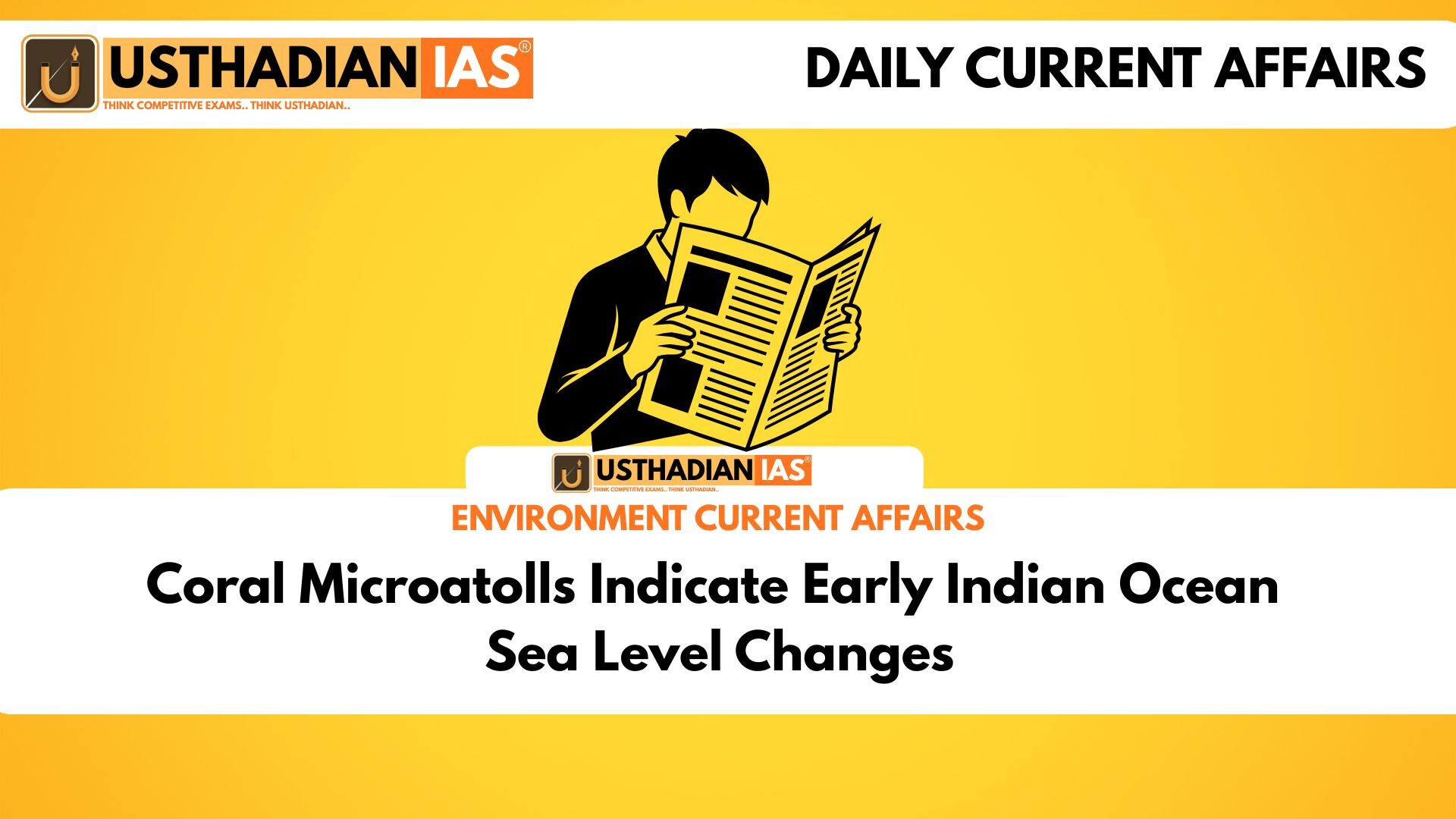Rising waters in the Indian Ocean
Coral Microatolls Indicate Early Indian Ocean Sea Level Changes: The Indian Ocean has been heating up at a rate faster than the global average, contributing significantly to rising sea levels. This trend reduces light reaching corals, weakens reef structures, and increases bleaching and coastal erosion. Low-lying islands such as the Maldives, Lakshadweep, and Chagos Archipelago are among the most at risk.
Static GK fact: The Indian Ocean ranks as the world’s third-largest ocean and connects Asia, Africa, and Australia.
Early monitoring efforts
Systematic sea-level observations in the region began with the Tropical Ocean Global Atmosphere (TOGA) project in the late 1980s and early 1990s. Later, these efforts were integrated into the Global Sea Level Observing System (GLOSS). According to the Ministry of Earth Sciences, sea levels in the Indian Ocean are rising by around 3.3 mm annually, which is above the world average. Still, central tropical areas lack long-term observational data.
Static GK fact: GLOSS is coordinated by the Intergovernmental Oceanographic Commission of UNESCO.
Role of coral microatolls
Coral microatolls serve as natural indicators of past sea levels. Their vertical growth halts when low tide levels restrict them, forcing lateral expansion. This makes their upper surfaces long-term records of sea-level fluctuations. A Porites coral microatoll from the Mahutigalaa reef in the Maldives was studied to extend the timeline of sea-level changes back to the 1930s.
Research techniques
Scientists mapped the coral’s edges and elevation, then extracted a slab for examination. X-ray scans revealed annual growth layers similar to tree rings, while uranium-thorium dating provided accurate timelines. Together, these methods reconstructed a clear history of sea-level changes in the region.
Key results of the study
The analysis indicated a total rise of 0.3 metres over nine decades. Importantly, sea-level rise began in the late 1950s, much earlier than previously thought. The pace of change has accelerated:
- 1–1.84 mm per year from 1930 to 1959
- 76–4.12 mm per year between 1960 and 1992
- 91–4.87 mm per year from 1990 to 2019
The Maldives, Lakshadweep, and Chagos Archipelago alone have seen levels climb by 30–40 cm over the past half-century.
Environmental and climate markers
Interruptions in coral growth coincided with major El Niño events and negative phases of the Indian Ocean Dipole, both of which stress coral ecosystems. The coral also reflected the 18.6-year lunar nodal cycle, which affects tidal behaviour. Since the study site is tectonically stable, the changes can be linked directly to climate and ocean patterns.
Static GK Tip: The lunar nodal cycle influences tides and has a repeating period of 18.6 years.
Importance for the future
By filling in data gaps, coral microatolls act as natural archives that complement satellite records and tide gauge observations. They reveal that sea-level rise is uneven across the Indian Ocean, influenced by factors such as the Southern Hemisphere westerlies and shifts in the Intertropical Convergence Zone (ITCZ). This knowledge is critical for climate research and adaptation strategies in vulnerable island regions.
Static Usthadian Current Affairs Table
Coral Microatolls Indicate Early Indian Ocean Sea Level Changes:
| Topic | Detail |
| Study site | Mahutigalaa reef, Maldives |
| Coral type | Porites microatoll |
| Period reconstructed | 1930–2019 |
| Rise recorded | 0.3 metre in 90 years |
| Early sea-level rise | Late 1950s |
| Maldives rise | 30–40 cm in last 50 years |
| Annual rise (India MoES) | 3.3 mm/year |
| Key climate links | El Niño, Indian Ocean Dipole |
| Additional signals | 18.6-year lunar nodal cycle |
| Monitoring body | Global Sea Level Observing System |








